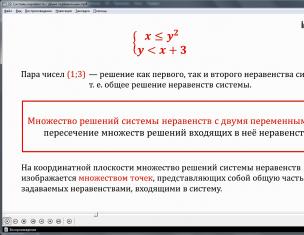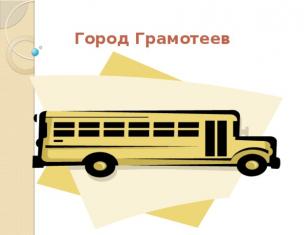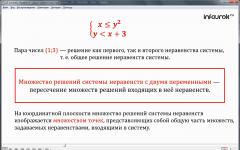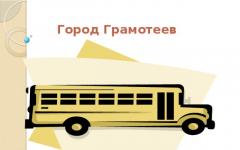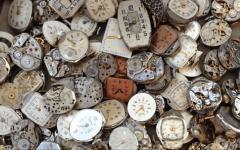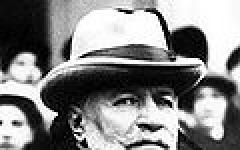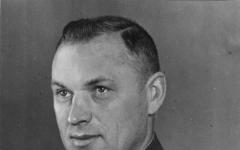Q7. Establish the sequence of arrangement of the spine sections from top to bottom.
A) sacral D) coccygeal
B) lumbar D) thoracic
B) cervical
Internal environment of the body
Level A assignments
A1. Blood is classified as tissue
1) nervous
2) muscular
3) connecting
4) epithelial
A2. In blood plasma, water is
AZ. Hemoglobin is in
1) platelets
2) leukocytes
3) red blood cells
4) plasma
A4. Capable of amoeba-like movement
1) red blood cells
2) leukocytes
3) platelets
4) red blood cells and leukocytes
A5. The internal environment of the body is formed
1) blood and lymph
2) tissue fluid and blood
3) lymph and tissue fluid
4) tissue fluid, blood and lymph
Level B assignments
B 1. Leukocytes are blood cells that
1) protect the body from pathogens
2) carry oxygen
3) have a core
4) are formed in the red bone marrow
5) are formed in the yellow bone marrow
6) participate in blood clotting
B 2.Red blood cells - blood cells
1) spherical shape
2) disc-shaped
3) multi-core
5) living on average up to 100-120 days
6) involved in blood clotting
B 3. Establish a correspondence between people and their blood groups.
BLOOD GROUP
B) A (II) C) B (III) D) AB (IV)
PEOPLE 1) universal donors
2) universal recipients
INTERNAL ENVIRONMENT OF THE ORGANISM
Level A assignments
Choose one correct answer from the four proposed.
A1. TO internal environment the body belongs
1) sweat 3) saliva
2) tissue fluid 4) stomach contents
A2. Platelets are
1) small anucleate biconcave cells
2) colorless cells capable of independent movement
3) fragments of cells with numerous processes
4) small anucleate bodies
AZ. Participates in the process of blood clotting
1) hemoglobin 3) interferon
2) fibrinogen 4) myosin
1) 2-3 thousand 3) 6-8 thousand
2) 3-5 thousand 4) more than 10 thousand.
A5. Immunity is the body's defense against
1) environmental factors
2) blood loss
3) viruses
4) all genetically alien objects
A6. Active artificial immunity occurs as a result
1) past illness 3) administration of vaccines
2) inheritance 4) introduction of serum
A7. Blood components playing main role in the formation of the body's immune defense,
1) leukocytes 3) blood plasma
2) platelets 4) erythrocytes
A8. Formed in the spleen and lymph nodes
1) lymphocytes 3) erythrocytes
2) platelets 4) no correct answer
A9. Lifespan of red blood cells
1)1-2 days 3) 100-120 days
2) 10-20 days 4) unlimited period
A10. A person with blood type I (0) can receive a blood transfusion
1)1(0) groups 3) III (B) groups
2) II (A) group 4) IV (AB) group
A11. In a person with IV (AB) blood group, agglutinogen(s) are present in the erythrocytes
2) In 4) there are no agglutinogens
A12. Capable of phagocytosis
1) red blood cells
2) leukocytes
3) platelets
4) there is no correct answer
Level B assignments
Choose three correct answers from the six given.
B1. Blood plasma contains
2) red blood cells
3) platelets
4) leukocytes
B 2. The internal environment of the body includes
1) blood 4) tissue fluid
2) urine 5) saliva
3) lymph 6) intestinal contents
B 3. There are several types of immunity
1) natural innate
2) unnatural
3) artificial active
4) artificial passive
5) simple inactive
6) difficult
Q4. Establish a correspondence between blood cells and their functions.
FUNCTIONS
A) oxygen transfer
B) participation in blood clotting
B) formation of immunity
D) carbon dioxide transfer
D) phagocytosis of microbes
E) formation of antibodies
BLOOD CELLS
1) red blood cells
2) leukocytes
3) platelets
| A | B | IN | G | D | E |
B5. Establish a correspondence between blood groups and their components.
COMPONENTS
A) in plasma agglutinins α and β
B) agglutinins α in plasma
B) in plasma agglutinins β
D) in erythrocytes antigens A and B
D) antigens A in erythrocytes
E) antigens B in erythrocytes
G) there are no agglutinins in plasma
BLOOD TYPES
| A | B | IN | G | D | E | AND |
Circulatory and lymphatic systems
Level A assignments
Choose one correct answer from the four proposed.
A1. Among the vessels circulatory system differentiate
1) arteries
3) capillaries
4)all of the above are true
A2. Arterial blood enters the left atrium
1) through the arteries
2) along the aorta
3) through the veins
4) by capillaries
AZ. From the left ventricle, blood enters
1) two pulmonary arteries
2) pulmonary trunk
4) two pulmonary veins
A4. Between the atrium and the ventricle there are valve(s)
1) casement
2) semilunar
3) cardiac and semilunar
4) valve and semilunar
A5. From the right ventricle, blood enters
1) two pulmonary veins
2) two pulmonary arteries
4) vena cava
Level B assignments
Choose three correct answers from the six given.
81. Arterial blood moves along
2) arteries
3) veins and arteries
4) capillaries
6) capillaries and veins
82. The circulatory system includes
1) arteries and veins
2) capillaries
3) lymphatic vessels
4) lymph nodes
5) heart
6) trachea and bronchi
Match the contents of the first and second columns.
83. Establish a correspondence between the chambers of the heart and the blood entering them.
CHAMBERS OF THE HEART BLOOD TYPE
A) right atrium 1) venous
B) right ventricle 2) arterial
B) left ventricle
D) left atrium
TRANSPORT OF SUBSTANCES
Level A assignments
Choose one correct answer from the four proposed.
A 1. Blood from the heart flows through
2) arteries
3) capillaries
4) veins and arteries
A 2. Inside the pericardial sac there is
1) air 3) liquid
2) fat layer 4) muscle layer
A 3. Flap valves regulate the flow of blood from
1) ventricles to atria
2) atria to ventricles
3) ventricles in arteries
4) veins in the atria
A 4. The pulmonary circulation begins in
1) right atrium 3) left atrium
2) right ventricle 4) left ventricle
A5. Duration of atrial contraction
1)0.1 s 3)0.4 s
2) 0.3 s 4) 0.8 s
A6. Regulates heart function
1) somatic nervous system
2) autonomic nervous system
3) somatic and autonomic nervous system
4) only the humoral system
A7. Normal human blood pressure
1)100/60 3)150/90
2)120/70 4)180/100
A8. The lowest speed of blood movement in
1) arteries 3) capillaries
2) aorta 4) veins
A9. Lymphatic vessels empty into
1) large arteries of the neck
2) large veins of the neck
3) large veins of the lower extremities
4) abdominal arteries
A10. The lymphatic system is part
1) circulatory system 3) digestive system
2) immune system 4) urinary system
A11. The total cross-section of all capillaries of the human body
1) equal to the cross section of the aorta
2) 10 times smaller than the cross-section of the aorta
3) 100 times larger than the cross section of the aorta
4) 1000 times larger than the cross section of the aorta
A12. Device for measuring blood pressure -
1) pressure gauge 3) tachometer
2) tonometer 4) spirometer
Level B assignments
Choose three correct answers from the six given.
B1. The wall of large blood vessels consists of tissues
1) epithelial 4) cartilaginous
2) fatty 5) nervous
3) muscular 6) connective
B2. Systemic circulation
1) begins in the right ventricle
2) begins in the left ventricle
3) ensures the delivery of oxygen to organs and tissues
4) ensures gas exchange in the lungs
5) ends in the right atrium
6) ends in the left atrium
VZ. Venous blood flows through
1) pulmonary veins
3) inferior vena cava
4) superior vena cava
5) pulmonary arteries
6) carotid artery
Match the contents of the first and second columns.
B 4. Establish a correspondence between the vessels and circulatory circles.
B) pulmonary arteries
B) pulmonary veins
D) vena cava
D) cerebral vessels
E) pulmonary trunk
CIRCLES OF BLOOD CIRCULATION
2) big
| A | B | IN | G | D | E |
B5. Establish a correspondence between the phases of the cardiac cycle and its characteristics.
CHARACTERISTICS
A) duration 0.4 s
B) duration 0.1 s
B) duration 0.3 s
D) contraction of the ventricles, relaxation of the atria
D) contraction of the atria, relaxation of the ventricles
E) general relaxation
3) Phase III
| A | B | IN | G | D | E |
B6. Establish a correspondence between the type of blood and the vessels through which it moves.
A) superior vena cava
B) pulmonary vein
B) carotid artery
D) pulmonary artery
E) radial artery
BLOOD TYPES
venous blood
arterial blood
| A | B | IN | G | D | E |
Q7. Establish the sequence of stages of blood passage through the circulation, starting with the left ventricle.
A) right atrium D) pulmonary capillaries
B) aorta D) left atrium
B) left ventricle E) right ventricle
Breath
Level A assignments
Choose one correct answer from the four proposed.
2) larynx
3) trachea
4) pharynx
A2. Gas exchange occurs in
1) larynx
2) nasopharynx
3) lungs
4) bronchi
AZ. The respiratory center is located in
1) cerebral hemispheres
2) medulla oblongata
3) cerebellum
A4. The average amount of carbon dioxide in exhaled air is
Level B assignments
Choose three correct answers from the six given.
81. The upper respiratory tract includes
1) bronchi
2) nasal cavity
3) lungs
4) nasopharynx
5) trachea
82. Respiratory organs
1) provide gas exchange
3) participate in thermoregulation
4) provide a decrease in the intensity of protein synthesis
5) increase immunity
6) participate in metabolism
83. Establish the sequence of stages of gas exchange in humans.
A) transportation of gases by blood B) exchange of gases between the air and the lungs C) exchange of gases between the lungs and blood D) gas exchange in tissues.
breath
Level A assignments
Choose one correct answer from the four proposed.
A1. The respiratory tract is
1) nasal cavity, larynx, trachea
2) nasal cavity, larynx, trachea, bronchi
3) only bronchi
4) trachea and bronchi
A2. The surface area of the alveoli in the lungs of an adult is equal to
1) 50 m2 3) about 300 m2
2) 60-120 m2 4) over 300 m2
AZ. The pleural cavity contains
1) liquid 2) air 3) vitamins 4) carbon dioxide
A4. Carbon dioxide is formed in
1) lungs 2) body cells 3) red blood cells 4) alveoli
1) pharynx 3) larynx
2) trachea 4) oral cavity
A6. The average vital capacity of the lungs in an adult is
1) 1000-1500ml
2) about 2000 ml
3) about 3500 ml
4) about 5000
A7. The trachea contains
1) cartilaginous rings
2) cartilaginous half rings
3) bone rings
4) bone half rings
A8. The respiratory tract includes:
1) alveoli 3) lungs
2) larynx 4) pleura
A9. The mucous membranes of the nasal cavity are formed by tissue
1) muscular 3) connective
2)epithelial 4) nervous
A10. The diaphragm is formed by tissue
3) muscular
4) glandular
1)epithelial
2) connecting
A11. The respiratory center is located in
1) midbrain 3) medulla oblongata
2) spinal cord 4) diencephalon
A12. The respiratory center is excited if in the intercellular substance
1) oxygen concentration decreases
2) oxygen concentration increases
3) the concentration of carbon dioxide increases
4) the concentration of carbon dioxide decreases
Level B assignments
Choose three correct answers from the six given.
81. Major respiratory muscles
1) abdominal muscles
2) diaphragm
3) trapezius muscle
4) internal intercostal muscles
5) external intercostal muscles
6) deltoid muscle
82. Features of the alveoli
1) consist of single-layer epithelium
2) consist of several layers of epithelial cells
3) look like bubbles
4) braided with capillaries
5) look like thin tubes
6) covered with muscle tissue
B3. The respiratory tract system is made up of
1) nasal cavity 4) trachea
2) alveoli 5) lungs
3) larynx 6) pleura
Match the contents of the first and second columns.
Q4. Establish a correspondence between air composition and air type.
A) 16% oxygen
B) 0.03-0.04% carbon dioxide
B) 21% oxygen
D) 4-4.5% carbon dioxide
AIR TYPE
1) inhaled 2) exhaled
| A | B | IN | G |
B5. Establish a correspondence between the stage of the respiratory cycle and the events that occur during it.
STAGE 1) inhale 2) exhale
A) contraction of the external intercostal muscles
B) contraction of the internal intercostal muscles
B) contraction of the diaphragm
D) relaxation of the diaphragm
D) drooping of the ribs
E) raising of the ribs
| A | B | IN | G | D | E |
Establish the correct sequence of biological processes, phenomena, and practical actions.
B6. Establish the sequence of stages of air passage through the respiratory system.
A) trachea D) nasopharynx
B) nasal cavity D) lungs
B) bronchi E) larynx
Digestion
Level A assignments
Choose one correct answer from the four proposed.
A1. With food a person receives
1) proteins and fats
2) minerals and vitamins
3) fats and carbohydrates
4)all of the above are true
A2. Important role When processing food in the oral cavity, the tongue plays, which
1) mixes
2) moves towards the pharynx
4)all of the above are true
AZ. The section of the digestive system where starch digestion begins is
1) oral cavity
2) stomach
4) small intestine
A4. The stomach is
1) part of the small intestine
2) digestive gland
3) organ of the excretory system
4) expansion of the digestive canal
A5. An adult's teeth
A6. Fangs in an adult
A7. The enzyme pepsin ensures the breakdown
2) carbohydrates
4) vitamins
Level B assignments
Choose three correct answers from the six given.
B1. The ducts of the salivary glands open into the oral cavity
1) chewable
2) parotid
3) digestive
4) sublingual
5) submandibular
6) facial expressions
82. Digestion occurs in the small intestine
1) proteins to amino acids
2) glucose to carbon dioxide and water
3) fiber to sucrose
4) carbohydrates to glucose
5) fat to fatty acids and glycerol
6) vitamins
Establish the correct sequence of biological processes, phenomena, and practical actions.
83. Establish the sequence of stages of digestion. A) mechanical processing of food in the oral cavity B) breakdown of carbohydrates under the action of salivary enzymes C) mixing of food with gastric juice D) breakdown of carbohydrates, proteins and fats into elemental organic compounds
D) removal of undigested food debris from the body E) absorption of nutrients into the blood and lymph
digestion
Level A assignments
Choose one correct answer from the four proposed.
A1. The breakdown of carbohydrates begins in
1) stomach 3) small intestine
2) oral cavity 4) esophagus
A2. In each jaw of an adult
1) 32 teeth 3) 20 teeth
2) 16 teeth 4) 10 teeth
AZ. The tooth root is covered
1) cement 2) enamel 3) dentin 4) crown
A4. Enzyme-free digestive juice
1) saliva 3) bile
2) gastric juice 4) intestinal juice
A5. Mainly digested in the stomach
1) proteins 3) carbohydrates
2) fats 4) sugars
A6. The digestive glands include
1) pancreas 3) adrenal glands
2) spleen 4) thyroid gland
A7. The initial section of the small intestine is
1) esophagus 3) gall bladder
2) duodenum 4) cecum
A8. Does not occur in the oral cavity
1) mechanical grinding of food
2) destruction of microbes
3) water absorption
4) breakdown of carbohydrates
A9. When starch breaks down, it forms
1) amino acids
2) glycerol and fatty acids
3) glucose
4) fructose
A10. Villi are formed by the mucous membrane
1) esophagus 3) small intestine
2) stomach 4) colon
A11. The stomach wall is not digested by digestive juices because
1) damaged epithelium is quickly restored
2) the stomach wall is covered with mucus
3) stomach juice does not contain the necessary enzymes
4) digestive enzymes cannot digest the components of the body that synthesizes them
A12. Not a liver function
1) formation of bile
2) glycogen storage
3) enzyme production
4) neutralization of toxic substances that enter the blood from the intestines
Level B assignments
Choose three correct answers from the six given.
B 1. Large salivary glands
1) parotid
2) behind the ear
3) sublingual
4) perilingual
5) supramillary
6) submandibular
B 2. Occurs in the small intestine
1) cavity digestion
2) parietal digestion
3) suction
4) accumulation of undigested food residues
5) formation of feces
6) breakdown of fiber
B 3. Depending on the predominance different substances distinguish food
1) protein 4) carbohydrate
2) fatty 5) fatty
3) mineral b) sugar
Match the contents of the first and second columns.
Q4. Establish a correspondence between nutrients and their breakdown products.
NUTRITIONAL PRODUCTS
SPLITTING OF MATTER
A) glycerol 1) proteins
B) glucose 2) carbohydrates
B) amino acids 3) fats
D) fatty acids
| A | B | IN | G |
B5. Match the substances with the vessels into which they are absorbed.
SUBSTANCES
A) glycerin
B) glucose
B) mineral salts
D) fatty acids
D) amino acids
1) blood capillaries
2) lymphatic capillaries
| A | B | IN | G | D |
Establish the correct sequence of biological processes, phenomena, and practical actions.
B6. Establish the sequence of arrangement of pi departments
digestive tract in humans.
A) esophagus D) pharynx
B) stomach D) large intestine
B) oral cavity E) small intestine
“Chimeric organisms” - Variegated plants. Development of experimental methods. Variegation. Transgenic organisms. Obtaining mice. Factors external environment. Chimeric and transgenic organisms. Diabetes. Study of chimeric animals. Chimera violets. Experiments. Chimeric organisms. Chimera animals.
"Symbiosis" - Symbiosis. Ants. Algae. Practical significance. Symbiosis of animals with microbes. The simplest unicellular animals. Symbiosis in the world of plants and animals. Biochemical symbioses. Symbiosis of autotrophs with heterotrophs. Nitrogen-fixing symbioses. Tight forms. Integration of the symbiotic complex. Algae cells. Green bodies. Myrmecodia. Lichen. Zoochlorella.
“Paleogene period” - Climate. Cenozoic era. Beginning of the Paleogene. Paleogene period. The climate was even tropical. Diatrymes. Oligocene. Paleogene. Upper Eocene. Bony fish. Animal world. Fan-tailed toothless birds.
“The main factors of evolution” - Waves of life. Hardy-Weinberg law. Features of behavior. Periodic fluctuations in numbers. Struggle for existence. The mechanism of evolutionary changes. Genetic drift. Types of mutations. Factors of evolution. Non-directing factors of evolution. Get acquainted with the non-directing factors of evolution. One of the most important factors in evolution. What is insulation? Constant mutational variability. Factors studied. Allele.
“Primates” - The classification of primates has undergone significant changes. Suborders and families Dry-nosed. Primates. The earliest primates most likely spread from Asia. Origin and immediate family. Appearance. General characteristics. Classification. Suborders and families Wet-nosed (Strepsirrhini). Practical significance. Scientific classification. One of the most progressive squads.
“Unified State Examination in Biology and Chemistry” - Separate programs by sections. Translation. Collections of programs. Unified State Exam subjects. Chemical element. Certificate of Unified State Exam results. Biology is the science of living nature. Duration. Chemical programs. Unsatisfactory result. Basic approaches to preparing students for the Unified State Exam in biology and chemistry. Who needs biology and chemistry. Internet. Remote form teaching schoolchildren. Features of the Unified State Exam. Unified State Examination in Chemistry and Biology.
Red blood cells were placed in a glass beaker filled with a solution of table salt. Compare the drawings of normal red blood cells (A) and a red blood cell
in solution (B). Determine by appearance erythrocyte concentration of the salt solution in the vessel (above the norm, below the norm, corresponds to the norm), if the normal concentration of the salt solution in the blood is 0.9%. Explain your answer.
A. 
| 18 |
It is known that the activity of enzymes depends on the reaction of the environment (pH environment). To test the activity of the salivary amylase enzyme, it was poured into three test tubes and a substrate was added. To create different environmental conditions
3 drops of a 0.1% solution were added to each test tube, respectively. hydrochloric acid(pH = 6.3), 0.1% sodium bicarbonate solution (pH = 7.3), distilled water (pH = 7). All test tubes were placed in a water bath at a temperature of 37°C. What was taken as a substrate to test the degree of enzyme activity? In what environment is the activity of the salivary enzyme maximum? Construct a graph of the degree of activity of the salivary enzyme depending on the pH environment and explain the results obtained.

Many arachnids have glands, the semi-liquid secretions of which turn into spider threads in the air. What significance does the use of the web have in their lives? Give at least three values.
In the alga Ulotrix, the predominant generation is the gametophyte. Determine the chromosome set of the spore and the adult. Explain from which initial cells and as a result of which division spores are formed during the alternation of sexual and asexual generations and adult individuals.
The woman and her husband are healthy. The woman's mother is healthy, but her father suffered from hemophilia. The woman's brother is healthy. A woman has two sons, one of whom has hemophilia and the other is healthy. Her sick son's wife is healthy, two girls and two boys are healthy. The parents of the son's wife had no anomalies. Determine the probability of having a sick child in a family and its gender.
Answers to assignments
| Job No. | Answer |
Q4. Comparison of structural features and functioning of organisms of different kingdoms
B2. Generalization and application of knowledge about the diversity of organisms and humans
B1. Generalization and application of knowledge about the cellular-organismal level of life organization
A32. Diversity of organisms
1. Which group of bacteria photosynthesizes, like higher plants and algae, releasing molecular oxygen?
1) green and purple bacteria 2) cyanobacteria
3) ammonifying bacteria 4) sulfur bacteria
2. The shape of leaves in coniferous plants contributes...
1) protection from being eaten by animals 2) better absorption of carbon dioxide
3) better release of phytoncides 4) preservation of moisture in winter
4. Mycorrhiza is a symbiosis...
1) mushroom and green algae 2) fungus and bacteria
3) a fungus with the root of a higher plant 4) nodule bacteria with the roots of legumes
5. Which group of bacteria is the most ancient?
1) archaebacteria 2) eubacteria 3) cyanobacteria 4) arose simultaneously
What functions does the chloroplast perform?
1) synthesis of carbohydrates
2) energy use sunlight for synthesis organic matter
3) fat synthesis
4) breakdown of organic substances into water and carbon dioxide
5) synthesis of organic substances from inorganic
6) splitting of polymers into monomers
Which of the listed taxa are used in the taxonomy of both plants and animals?
1) genus 2) family 3) order 4) class 5) department 6) type
1. Match the plant organ with its type
2. Establish a correspondence between cap mushrooms and the groups to which they belong.
3. Establish a correspondence between the features and the plant tissues for which they are characteristic.
1. Establish the sequence of stages of pea seed germination.
A) swelling of the seed B) intensive growth of the embryonic stalk and bud
C) development of leaves capable of photosynthesis, death of cotyledons
D) transition of reserve nutrients into a soluble state
D) emergence of cotyledons to the surface E) rupture of the seed coat
2. Establish the sequence of life cycle stages for representatives of the Gymnosperms department.
A) formation of male cones B) fertilization C) pollination D) formation of a zygote E) formation of a pollen tube E) formation of microspores as a result of meiosis
For the correct answer when determining the correct sequence, 2 points are also awarded. 1 point is given if the answer incorrectly determines the sequence of the last two elements or they are missing when all previous elements are correctly determined.
B17. Establish the sequence of processes occurring during interphase and mitosis.
B18. Establish the sequence of processes occurring during meiosis.
Part C
For task C, give a complete, detailed answer.
The answer includes all the above elements and does not contain biological errors – 3 points; the answer includes 2 of the above elements and does not contain biological errors, OR the answer includes the 3 elements mentioned above, but contains minor biological errors - 2 points; the answer contains 1 of the above elements and does not contain biological errors, OR the answer includes the 2 elements mentioned above, but contains minor biological errors - 1 point.
C1. What are the two main types of cell division known in nature? What is characteristic of each type of division?
C2. What types of postembryonic development are known in nature? What are they characteristic features? Give examples.
C3. What periods is interphase divided into? What is characteristic of each period?
C4. What three periods are distinguished in embryogenesis? What main processes occur during these periods in the lancelet?
C5. What periods are distinguished in spermatogenesis? What is characteristic of each period?
C6. What periods are distinguished in oogenesis? What is characteristic of each period?
C7.
1. During the interphase of the mitotic cycle, cell growth, DNA replication, and an increase in the number of organelles occur. Chromosomes become monochromatid. 2. During prophase of mitosis, the nuclear membrane is destroyed, centrioles diverge to different poles of the cell, spindle filaments are formed, and chromosomes condense. 3. During anaphase of mitosis, chromosomes line up in the equatorial plane of the cell, and spindle threads are attached to the centromeres. 4. In the metaphase of mitosis, chromatids move to the poles of the cell and become independent chromosomes. 5. During telophase, chromosomes unwind in each daughter cell, nuclear membranes form, and the cytoplasm divides.
C8. Find errors in the given text. Indicate the numbers of the sentences in which errors were made and correct them.
1. The haploid nucleus of a pollen grain is divided into two – vegetative and generative. 2. The generative nucleus in the pollen tube divides again, forming two sperm. 3. One sperm fuses with the egg to form a zygote, from which an ovule is formed. 4. The second sperm fuses with the central nucleus and a diploid endosperm is formed - a supply of nutrients for the seed. 5. The seed coat is formed from the walls of the ovary of the pistil.
C9. When and due to what does recombination of genetic material occur during meiosis?
C10. During embryogenesis, three germ layers are formed - ectoderm, endoderm and mesoderm. Subsequently, organs and organ systems are formed from them. What are the derivatives of the germ layers?


